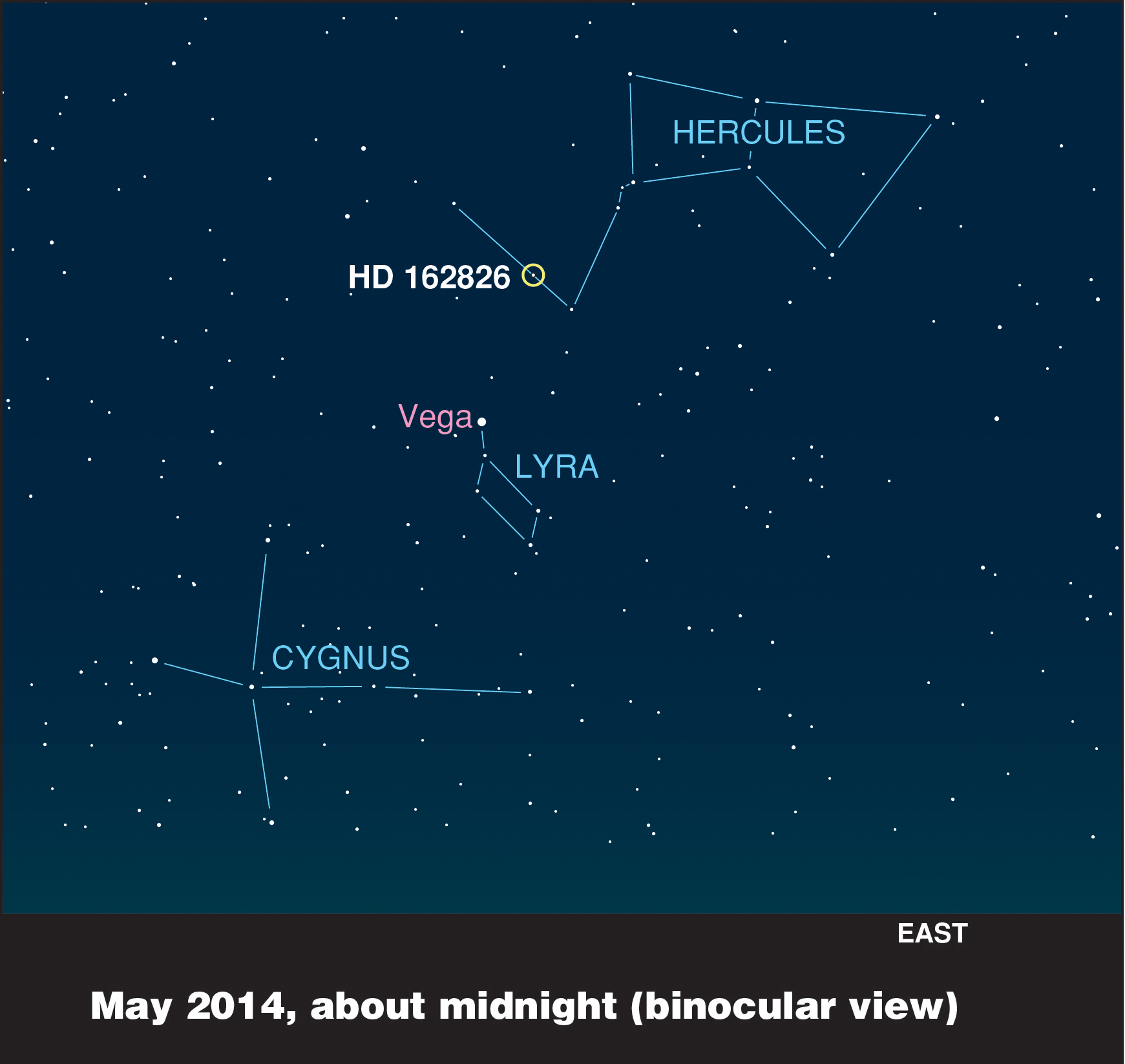Astronomers from the University of Texas announced that they have discovered the 'sibling' of our star. The team lead by Ivan Ramirez has identified the 'sibling' star is most likely formed from the same gas and dust cloud as our sun from 30 candidate stars. The identified star is HD162826, located in the constellation of Hercules at a distance of ~34 parsec (~110 light years) from us. It is an F-type dwarf star about 15% more massive than our sun and it can be observed using small/medium sized telescopes. They have also ruled out any possibility of hot-Jupiter planets, a high chance (2/3) that there are no Jupiter sized planets but could not rule out any smaller size planets.
How was it Found?
The astronomers used two techniques to identify the 'sibling': elemental abundance and orbital information.
Elemental abundance analysis is crucial in the identification of the 'sibling' star. The astronomers stressed that the number of elements used in the analysis should be 'as many as possible' ideally, but not all elements are equally important and only a few elements can be focused on in practice. The elements Ba and Fe were suggested by the authors as they showed a large star-to-star dispersion. In order for a star to be a 'sibling' of our sun, one would expect that it will have a similar elemental abundance as our sun.
Orbital information used is the relative distance and radial velocity between the candidate stars and our sun. In order to qualify as a 'sibling' star, it has to have an almost constant relative distance and a stable radial velocities. The astronomers modeled these dynamical properties using a suitable model.
It is insufficient to just use only one of the techniques. The shortcomings of using just one technique is presented in the paper. The elemental abundance analysis gave two candidate 'siblings': HD154747 and HD162826. On the other hand, the orbital analysis also produced two candidate 'siblings': HD83432 and HD162826. Combining both techniques allowed the astronomers to conclude that HD162826 is more likely to be a 'sibling' to our sun.
According to Ramirez, this is only the beginning as more data is expected from other surveys such as Gaia (the European Space Agency mission to create the largest and most precise 3-D map of the Milky Way).
Source and more information:
http://www.utexas.edu/news/2014/05/08/sun-sibling-astronomy/
http://mcdonaldobservatory.org/news/releases/2014/05/08
http://www.as.utexas.edu/~ivan/sun_siblings.pdf
Elemental abundance analysis is crucial in the identification of the 'sibling' star. The astronomers stressed that the number of elements used in the analysis should be 'as many as possible' ideally, but not all elements are equally important and only a few elements can be focused on in practice. The elements Ba and Fe were suggested by the authors as they showed a large star-to-star dispersion. In order for a star to be a 'sibling' of our sun, one would expect that it will have a similar elemental abundance as our sun.
Orbital information used is the relative distance and radial velocity between the candidate stars and our sun. In order to qualify as a 'sibling' star, it has to have an almost constant relative distance and a stable radial velocities. The astronomers modeled these dynamical properties using a suitable model.
It is insufficient to just use only one of the techniques. The shortcomings of using just one technique is presented in the paper. The elemental abundance analysis gave two candidate 'siblings': HD154747 and HD162826. On the other hand, the orbital analysis also produced two candidate 'siblings': HD83432 and HD162826. Combining both techniques allowed the astronomers to conclude that HD162826 is more likely to be a 'sibling' to our sun.
According to Ramirez, this is only the beginning as more data is expected from other surveys such as Gaia (the European Space Agency mission to create the largest and most precise 3-D map of the Milky Way).
Source and more information:
http://www.utexas.edu/news/2014/05/08/sun-sibling-astronomy/
http://mcdonaldobservatory.org/news/releases/2014/05/08
http://www.as.utexas.edu/~ivan/sun_siblings.pdf

No comments:
Post a Comment